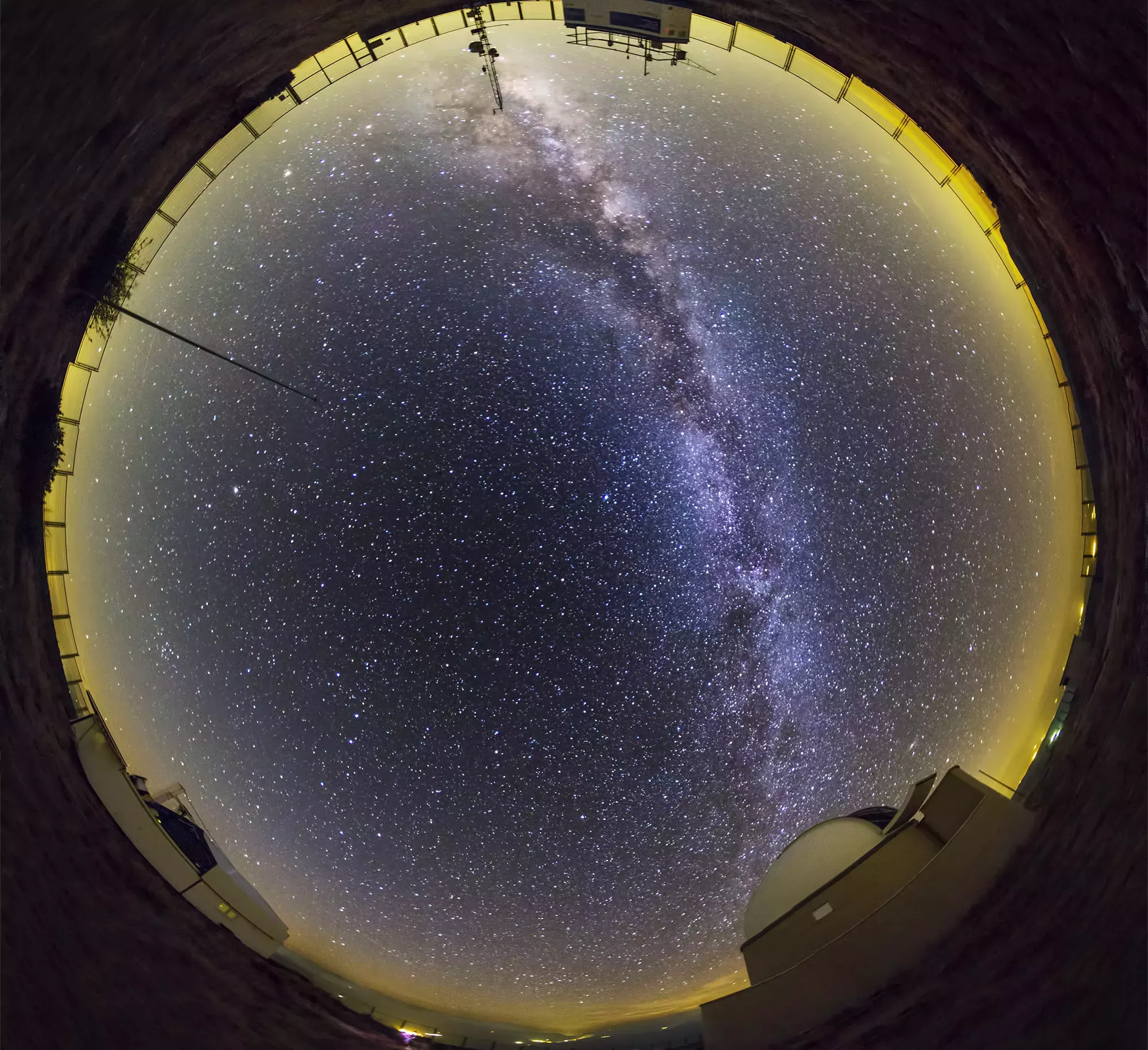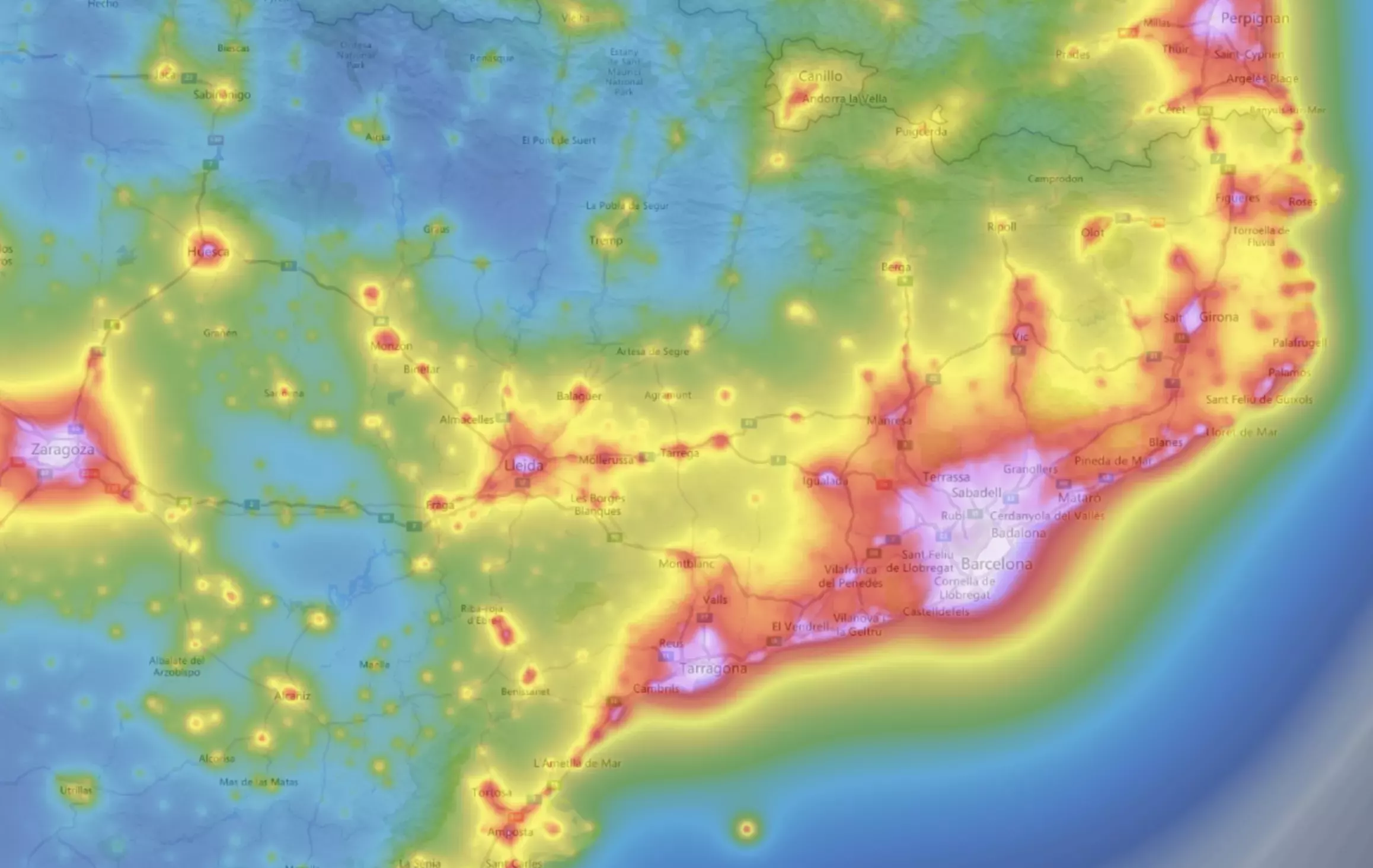Innovation and services
The Montsec Observatory (OdM) is the most important scientific infrastructure for research in astronomy and space sciences and technologies in Catalonia and one of the most advanced in Europe, thanks to the equipment installed based on innovative and advanced technologies.
In addition, the Observatory is in a privileged situation, given its good conditions in terms of climatology, transparency and atmospheric quality, as well as the absence of atmospheric pollutants, light and electromagnetic noise. To these elements we must add the fact of having an obstacle-free horizon that allows optimal visibility in all directions.
The OdM hosts different types of services. Those that are based on space technologies are, for example, the data provision services for the European satellite traffic monitoring system, the service for the monitoring of the entry into the atmosphere of potentially dangerous objects (bolides), satellite communications services or satellite calibration services. It also hosts other types of services dedicated to the measurement of atmospheric quality, the monitoring of meteorological variables, the collection of images in real time for the fire brigade emergency system in fire detection or communications for the monitoring of risks of different hydroelectric plants.
The observatory is also a laboratory for innovation open to public and private initiative. The IEEC promotes the development of demonstrators and proofs of concept that can be carried out at the OdM thanks to the capabilities of the site and the equipment installed. Participation in the CERCAGinys programme is an example of this, which has allowed the OdM to be projected to the Catalan research centres.

our services
Space vigilance and monitoring
The security of European economies, societies and citizens depend on applications of space technology, such as communication, navigation and observation. However, due to the increasing occupation of the orbital environment, satellites are increasingly at risk of collision with other operational objects or with remnants of space junk. At the same time, satellites in low orbits can enter again and cause damage to the ground. To mitigate these risks, it is imperative to monitor and track these objects. This is the main objective of the European programme EU-SST (European Space Surveillance and Tracking), which has motivated the development of a network of telescopes capable of detecting and tracking satellites and space debris.
The Telescope Joan Oró (TJO) became a full member of the EU system for space surveillance and monitoring in 2016, being one of the few optical telescopes in Spain with a demonstrated capacity to become a member of this network. Since then, the TJO has participated in this network with follow-up mode service. The TJO’s control and data processing software is constantly evolving to further improve the telescope’s capabilities to detect small objects, as well as to automatically process and provide data immediately.
The operations dedicated to space surveillance and tracking (SST) also represent one of the main observation programmes of the Fabra – ROA Montsec Telescope (TFRM, due to the Catalan acronym). In these cases, the large view-field of the telescope allows it to contribute to the network in satellite tracking mode, and in close-up mode for the detection of objects in unknown positions. The design of the TFRM and the technology of its main imaging camera, together with its control system, allow the obtaining of data for SST with the maximum immediateness and precision.
our services
Infrastructure of the CERCA Ginys platform
CERCA Ginys, the new technological platform website of the CERCA Institution, allows access to infrastructures, scientific services and qualified personnel to help you develop your project. The Montsec Observatory is part of the platform’s infrastructure network.
One of the success stories of CERCA Ginys shows the collaboration between the Montsec Observatory and the company isardSAT. isardSAT is a R&D company providing services and solutions in the field of Earth Observation from space.
It works to provide applications that help monitoring climate change variables, such as sea level rise. The Montsec Observatory has offered its facilities to isardSAT to locate an experimental reflector that deals with the external calibration of Poseidon-4, altimeter of the Sentinel-6 satellite. After installing the reflector in April 2021, the results show exceptional performance, comparable to other instruments the European Space Agency uses today.
our services
Quality of the site
The area surrounding the Montsec mountain chain has the ideal conditions for astronomical observation: absence of light pollution, good atmospheric stability and a large number of nights with good weather conditions. The location of the Montsec Observatory was chosen as a result of the measures taken at the end of the 90s to validate the quality of the night skies. The most recent measurement campaigns carried out at the OdM show that the brightness of the sky background on moonless nights reaches magnitude 21.8, while the atmospheric turbulence (seeing) is below 1 arcsecond 60 % of the time.
In 2013, several municipalities around Montsec, both in the Pallars Jussà and Noguera areas, received the certification of Reserve and Tourist Destination by the Starlight Foundation. In addition, in the same year, the minister of Territory and Sustainability signed the resolution to set the Montsec Observatory as a light quality reference point and establish the corresponding area of influence, which guarantees the preservation of the quality of the night sky in the area.
The remote location of the OdM makes the site a privileged place in terms of the lack of radioelectric interference. This allows us to make telecommunications with very little noise. In addition, the situation of the OdM provides us with visibility of practically the entire horizon. In this way, the OdM is an ideal location for the installation of telecommunications antennas with satellites, as well as a platform for radioelectric tests. In the medium term, the objective is to position the OdM as a reference industrial teleport, in order to provide service and respond to the needs of the sector.
